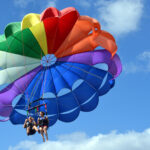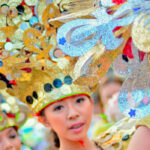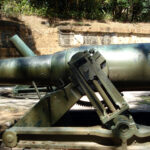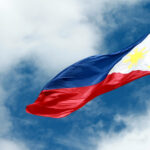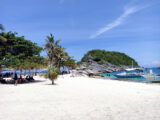Explore the Philippines
The Philippines is an archipelago of over 7,600 tropical islands and islets (second largest in the world after Indonesia). The coastline extends 35,000km (21,700 miles) with many natural harbors and white sandy beaches. The land is made up of mountains, lush forests, caves, waterfalls and 37 volcanoes (17 active). Located in the heart of the Coral Triangle, the country has 34,000 square km (13,124 square miles) of coral reefs. Biodiversity, both below the water as well as flora and fauna above the water are some of the most extensive anywhere in the world. The country has an extremely rich history and cultural heritage that can be seen in its diverse ethnic and linguistic makeup and customs.
No matter what you like, you can probably find it and more in the Philippines. Most people speak English and are among the friendliest to visitors you are apt to find anywhere. The lists below are broken down in the the following general areas: places and geography, activities, and cultural (language, arts, cuisine). The list is not exhaustive but is meant as an introduction to the country and a starting point for those wanting to learn more about this wonderful place we call the Philippines.
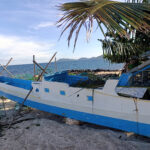 Regions Across the Philippines The Philippines is comprised of over 7,500 islands The three main geographical areas are Luzon, Visayas and Mindanao. The Luzon area includes the largest island Luzon and other islands in the northern part of the country. The Visayas are in the middle of the country while Mindanao includes the second largest island, Mindanao and surrounding islands. Each area is made up of several official regions which are listed below. Each region in turn comprises several provinces. Details on each of the Philippine regions can be found here. …
Regions Across the Philippines The Philippines is comprised of over 7,500 islands The three main geographical areas are Luzon, Visayas and Mindanao. The Luzon area includes the largest island Luzon and other islands in the northern part of the country. The Visayas are in the middle of the country while Mindanao includes the second largest island, Mindanao and surrounding islands. Each area is made up of several official regions which are listed below. Each region in turn comprises several provinces. Details on each of the Philippine regions can be found here. …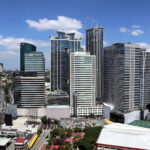 Philippine Cities Coming soon... Luzon Bicol - Region 5 Cagayan Valley - Region 2 Calabarzon - Region 4A Central Luzon - Region 3 Cordillera - Region CAR Ilocos - Region 1 Mimaropa Mimaropa Region National Capital Region - NCR Visayas Central Visayas - Region 7 Eastern Visayas - Region 8 Western Visayas - Region 6 Mindanao Bangsamoro - Region BARMM Carga - Region 13 Davao - Region 11 Northern Mindanao - Region 10 Soccsksargen - Region 12 Zamboanga Peninsula - Region 9 …
Philippine Cities Coming soon... Luzon Bicol - Region 5 Cagayan Valley - Region 2 Calabarzon - Region 4A Central Luzon - Region 3 Cordillera - Region CAR Ilocos - Region 1 Mimaropa Mimaropa Region National Capital Region - NCR Visayas Central Visayas - Region 7 Eastern Visayas - Region 8 Western Visayas - Region 6 Mindanao Bangsamoro - Region BARMM Carga - Region 13 Davao - Region 11 Northern Mindanao - Region 10 Soccsksargen - Region 12 Zamboanga Peninsula - Region 9 … Climate The Philippines has a humid equatorial climate characterized by high temperatures and heavy rainfall. There are four recognized types of climates based on the distribution of rain (see below). The two main seasons are the wet or rainy season (June - November) and dry (less rainy, December - May). The later is sometimes subdivided further into the cool dry season (December - February) and the hot dry season (March - May). The warmest months of the year are generally between March and October and the coolest between November and February. Temperature Based on measurement of all weather stations in the Philippines (except Baguio), the average year-round temperature of the country is 26.6℃ (79.9 ℉). Cooler days are usually experienced in… …
Climate The Philippines has a humid equatorial climate characterized by high temperatures and heavy rainfall. There are four recognized types of climates based on the distribution of rain (see below). The two main seasons are the wet or rainy season (June - November) and dry (less rainy, December - May). The later is sometimes subdivided further into the cool dry season (December - February) and the hot dry season (March - May). The warmest months of the year are generally between March and October and the coolest between November and February. Temperature Based on measurement of all weather stations in the Philippines (except Baguio), the average year-round temperature of the country is 26.6℃ (79.9 ℉). Cooler days are usually experienced in… … Marine / Coral Triangle This page is currently under construction. While we work on the final content here are a few third party videos of the region. The videos are in no particular order. Third Party Videos TUBBATAHA REEFS - Heart of the Philippine Seas [Documentary] https://www.youtube.com/watch?v=Uq3fJY3evNY&ab_channel=AaronPalabyab This was a commissioned work that did not see completion and later released. The quality of the documentary is excellent as are the video included. From the introduction in the video: In 2011, we were hired to document all of the Philippines' UNESCO World Heritage Sites. However, because the key stakeholder client, the Commission on Information and Communications Technology (CICT) was restructured by the government in the middle of our project, the project stalled and our final… …
Marine / Coral Triangle This page is currently under construction. While we work on the final content here are a few third party videos of the region. The videos are in no particular order. Third Party Videos TUBBATAHA REEFS - Heart of the Philippine Seas [Documentary] https://www.youtube.com/watch?v=Uq3fJY3evNY&ab_channel=AaronPalabyab This was a commissioned work that did not see completion and later released. The quality of the documentary is excellent as are the video included. From the introduction in the video: In 2011, we were hired to document all of the Philippines' UNESCO World Heritage Sites. However, because the key stakeholder client, the Commission on Information and Communications Technology (CICT) was restructured by the government in the middle of our project, the project stalled and our final… …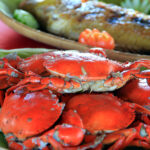 Cuisine The cuisine of the Philippines, like so many areas of Philippine culture, is tightly coupled with the history, geography, and climate mixed together with about 120 different ethnic groups, each with their own local customs and history. It is an integral part of local art and culture.Philippine cuisine has been strongly influenced by foreign foods brought in from traders and later immigrants. Some of the most notable are Malay, Chinese, Spanish, Mexican and American. The merging of the numerous indigenous foods with foreign influences resulted in what some refer to as the original fusion cuisine.https://www.youtube.com/watch?v=scWgVq7XU1c&t=90s&ab_channel=FoodPhilippinesMost native Filipino dishes consists of rice with some kind of meat, such as fish, chicken or pork. Seafood figures prominently everywhere with grouper (lapu lapu),… …
Cuisine The cuisine of the Philippines, like so many areas of Philippine culture, is tightly coupled with the history, geography, and climate mixed together with about 120 different ethnic groups, each with their own local customs and history. It is an integral part of local art and culture.Philippine cuisine has been strongly influenced by foreign foods brought in from traders and later immigrants. Some of the most notable are Malay, Chinese, Spanish, Mexican and American. The merging of the numerous indigenous foods with foreign influences resulted in what some refer to as the original fusion cuisine.https://www.youtube.com/watch?v=scWgVq7XU1c&t=90s&ab_channel=FoodPhilippinesMost native Filipino dishes consists of rice with some kind of meat, such as fish, chicken or pork. Seafood figures prominently everywhere with grouper (lapu lapu),… …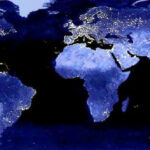 Language The Philippines is home to approximately 180 living languages. Most native languages are local branches from the Malayo-Polynesian languages, which are themselves branches of the Austronesian language family. Eight major languages along with their dialects are the mother tongues of about 90% of the population. Filipino and English are the official languages in the country and are used in government, education, print, broadcast media and business. Other widely spoken languages include Tagalog (from which Filipino is derived), Cebuano, Ilocano, Hiligaynon (Ilonggo), Bikol, and Bisaya (Binisaya). The mixing of English and other local languages (usually Tagalog) in conversation is common (sometimes referred to as code-switching). Spanish, which was widely spoken during the late nineteenth century, is rarely used, however its influence… …
Language The Philippines is home to approximately 180 living languages. Most native languages are local branches from the Malayo-Polynesian languages, which are themselves branches of the Austronesian language family. Eight major languages along with their dialects are the mother tongues of about 90% of the population. Filipino and English are the official languages in the country and are used in government, education, print, broadcast media and business. Other widely spoken languages include Tagalog (from which Filipino is derived), Cebuano, Ilocano, Hiligaynon (Ilonggo), Bikol, and Bisaya (Binisaya). The mixing of English and other local languages (usually Tagalog) in conversation is common (sometimes referred to as code-switching). Spanish, which was widely spoken during the late nineteenth century, is rarely used, however its influence… …
